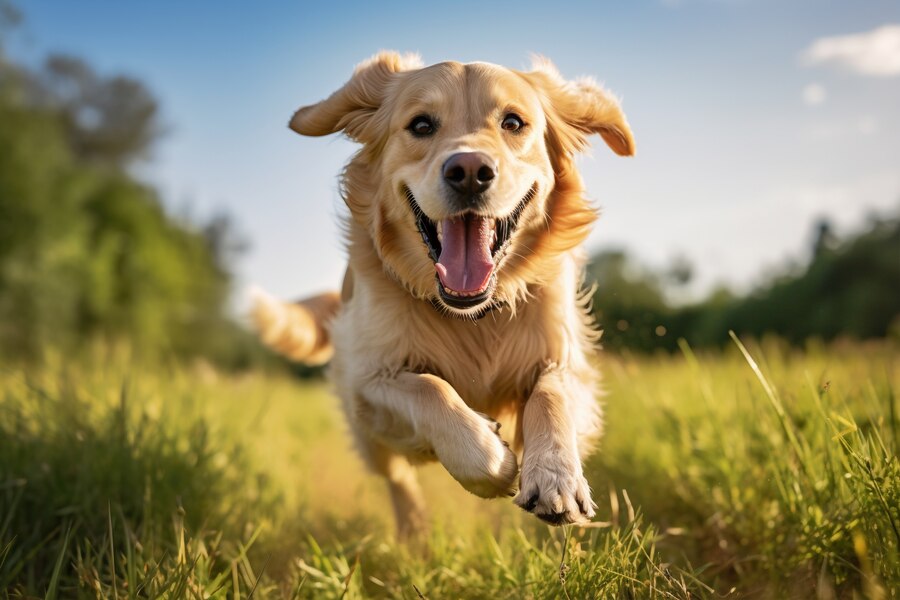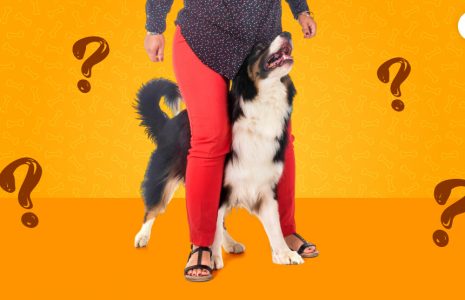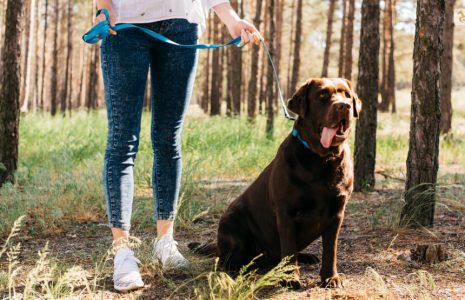Training Your Dog For Outdoor Adventures


Welcoming your dog into the bustling world outdoors is an exciting venture that comes with its set of challenges and triumphs.
Transitioning from the comfort of home to the unpredictability of public spaces demands owner patience, consistency, and training.
In this guide, we’ll delve into the essential strategies to prepare your indoor pup for navigating a new frontier confidently and with ease.
The Benefits of Taking Your Dog Outside
Before embarking on the training process, understanding the advantages of outdoor exposure for your dog is crucial. Beyond the numerous benefits of physical exercise, outdoor ventures enrich your pet’s mental stimulation, socialization skills, and overall well-being. The different scents, sights, and sounds provide mental enrichment, preventing boredom and promoting a healthier mindset.
Training Your Dog to Be Comfortable Outdoors
Gradual Exposure: Start small. Begin by introducing your dog to quieter, less stimulating outdoor environments. Allow them time to adjust to new sounds, smells, and sights before moving to busier places.
Positive Reinforcement: Use treats, toys, and verbal praise to reward good behavior. When your dog displays calm and confident behavior outdoors, reward them immediately, reinforcing the positive association with the new environment.
Leash Training: Practice leash manners indoors first before transitioning outside. Encourage loose leash walking and teach commands like “heel” and “leave it.” This ensures better control and safety in public spaces.
Socialization: Controlled interactions with other dogs and people are crucial. Consider enrolling your dog in obedience classes or arranging playdates with other well-behaved dogs to foster positive social experiences.
Desensitization Techniques: Gradually expose your dog to various stimuli they may encounter outdoors, such as bicycles, cars, crowds, and different surfaces. This helps reduce fear or anxiety responses.
Identifying Aggressive Behavior
A critical aspect of acclimating your indoor dog to public outings is recognizing signs of aggression or discomfort. Watch for cues such as stiff body language, growling, raised fur, or bared teeth. Addressing these behaviors promptly and positively is crucial to prevent escalations or uncomfortable situations for both your dog and others.
Knowing When to Call it and Go Home
Not every outing will proceed smoothly, and that’s okay. Understanding your dog’s limits is crucial. If your dog seems overwhelmed, anxious or is displaying signs of distress, it’s best to end the outing and retreat to a familiar and safe environment. Always prioritize your dog’s comfort and well-being.

Managing Overstimulation or Aggression in Your Dog
Even with diligent training, dogs can sometimes become overly stimulated or display signs of aggression in public settings. Knowing how to handle these situations calmly and effectively is crucial for your dog’s well-being and the safety of those around you.
- Stay Calm: Your dog can sense your emotions. If you notice signs of overstimulation or aggression, stay calm and composed. Avoid escalating the situation with panicked reactions or raised voices.
- Assess the Situation: Quickly assess the triggers causing your dog’s reaction. Is it a loud noise, an approaching dog, or a crowded environment? Understanding the cause helps in addressing the issue appropriately.
- Use Distraction Techniques: Redirect your dog’s attention away from the trigger by using commands they are familiar with, such as “sit,” “stay,” or “focus.” Offering treats or a favorite toy can also divert their attention.
- Create Distance: If your dog is reacting to another dog, person, or stimulus, create distance by calmly walking away. Putting physical space between your dog and the trigger can help diffuse the situation.
- Employ Desensitization Methods: If your dog consistently reacts to certain triggers, gradually expose them to these stimuli in controlled environments. Use positive reinforcement to associate the trigger with calm behavior.
- Seek Professional Help: If your dog’s aggressive behavior persists or worsens, consider consulting a professional dog trainer or behaviorist. They can assess the situation, provide tailored guidance, and create a behavior modification plan.
- Safety Measures: Prioritize safety for both your dog and others. Utilize a muzzle or head halter if necessary, especially in situations where your dog’s behavior may pose a risk.
- Know When to Retreat: If attempts to calm your dog are unsuccessful and the situation feels unsafe, calmly and swiftly remove your dog from the environment. Retreating to a quieter and familiar space can help alleviate stress.
- Aftercare and Evaluation: After an overstimulating or aggressive episode, take time to evaluate the situation. Reflect on what triggered your dog’s reaction and consider adjustments to your training approach or environment for future outings.
Remember, addressing overstimulation or aggression requires patience and consistency. Every dog is unique, and what works for one may not work for another. By staying attentive, responsive, and compassionate, you can help your dog navigate challenging situations more comfortably over time. It’s imperative to understand how to handle these situationIf needed. Any injuries caused by your dog can leave you open to a personal injury according to Dormer Harpring.
Respecting Leash Laws and No Dog Signage
Responsible pet ownership involves adhering to local leash laws and respecting areas where dogs are not permitted. Always keep your dog leashed in designated areas and respect signage indicating no dogs allowed. This not only ensures your dog’s safety but also fosters a positive image of dog owners in the community.
Craft a Unique Approach for Your Companion
Training your indoor dog to handle public outings is a rewarding journey that requires patience, consistency, and understanding. By gradually exposing your dog to new environments, using positive reinforcement techniques, and respecting boundaries, you can help your furry friend become a confident and well-behaved companion in any outdoor setting.
Remember, each dog is unique, so tailor your approach to suit your pet’s personality and needs. With dedication and practice, your indoor dog can thrive in the outdoor world, enriching both of your lives with wonderful shared adventures.
Read Also:









Leave A Comment